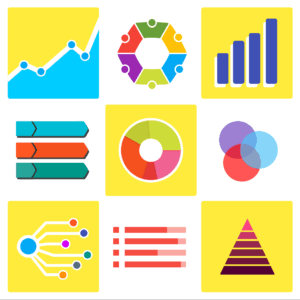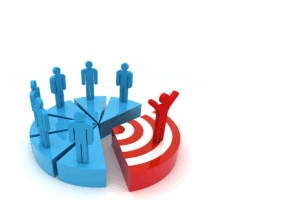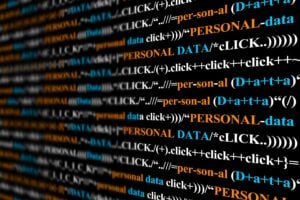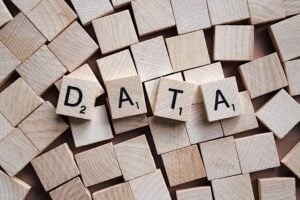Defining Data, Analytics, and AI
- Data: Raw, unprocessed facts and figures that can be collected, stored, and analyzed. Data can be structured (e.g., tables, databases), unstructured (e.g., text, images, videos), or semi-structured (e.g., JSON, XML).
- Analytics: The process of examining data to extract meaningful insights, patterns, and trends. It involves using various techniques and tools to analyze data and support decision-making.
- Artificial Intelligence (AI): The simulation of human intelligence processes by machines, especially computer systems. AI enables machines to perform tasks that typically require human intelligence, such as learning, problem-solving, and decision-making.
Types of Data, Analytics, and AI
- Data:
- Structured Data: Organized data in a predefined format (e.g., databases, spreadsheets).
- Unstructured Data: Data that does not have a predefined format (e.g., text, images, videos, social media posts).
- Semi-structured Data: Data that has some organizational properties, but is not fully structured (e.g., JSON, XML).
- Analytics:
- Descriptive Analytics: Analyzing past data to understand what happened.
- Diagnostic Analytics: Investigating why something happened.
- Predictive Analytics: Forecasting future outcomes based on historical data.
- Prescriptive Analytics: Recommending actions to achieve desired outcomes.
- AI:
- Machine Learning (ML): Enabling machines to learn from data without explicit programming.
- Deep Learning (DL): A subset of ML that uses artificial neural networks to learn complex patterns.
- Natural Language Processing (NLP): Enabling machines to understand and process human language.
- Computer Vision (CV): Enabling machines to interpret and understand visual information.
- Robotics: Designing and building robots that can perform tasks autonomously.
Benefits of Data, Analytics, and AI
- Improved Decision-Making: Data-driven insights enable more informed and accurate decisions.
- Enhanced Operational Efficiency: Automation and optimization of processes through AI and analytics.
- Personalized Customer Experiences: Tailored products, services, and marketing campaigns based on customer data.
- Increased Revenue and Profitability: Identifying new revenue streams and optimizing pricing strategies.
- Risk Mitigation: Detecting and preventing fraud, security breaches, and other risks.
- Innovation and Product Development: Identifying new market opportunities and developing innovative products and services.
Challenges of Data, Analytics, and AI
- Data Quality and Governance: Ensuring data accuracy, consistency, and security.
- Data Privacy and Security: Protecting sensitive data and complying with regulations.
- Talent Shortage: Finding and retaining skilled professionals in data science, analytics, and AI.
- Integration and Compatibility: Integrating data from disparate sources and systems.
- Bias and Ethical Considerations: Addressing biases in data and algorithms and ensuring ethical AI practices.
- Explainability and Transparency: Understanding how AI models make decisions.
- Cost of Implementation: The cost of the technology, and talent needed to implement these systems.
Applications and Use Cases
- Healthcare:
- Predicting patient outcomes and personalizing treatment plans.
- Automating medical image analysis for diagnosis.
- Developing AI-powered drug discovery and development.
- Finance:
- Detecting fraud and money laundering.
- Predicting market trends and optimizing investment strategies.
- Providing personalized financial advice.
- Retail:
- Personalizing product recommendations and marketing campaigns.
- Optimizing inventory management and supply chain logistics.
- Providing AI-powered customer service chatbots.
- Manufacturing:
- Predicting equipment failures and optimizing maintenance schedules.
- Automating quality control and production processes.
- Designing and developing intelligent robots for manufacturing.
- Marketing:
- Analyzing customer sentiment on social media.
- Automating marketing campaigns.
- Predicting customer churn.
- Transportation:
- Developing self-driving vehicles and autonomous drones.
- Optimizing traffic flow and reducing congestion.
- Predicting and preventing transportation accidents.
- Cybersecurity:
- Detecting and preventing cyberattacks.
- Automating security monitoring and incident response.
- Analyzing network traffic to identify anomalies.
Best Practices
- Develop a Data-Driven Culture: Encourage data-driven decision-making throughout the organization.
- Invest in Data Quality and Governance: Establish robust data management practices.
- Build a Skilled Team: Recruit and train professionals in data science, analytics, and AI.
- Choose the Right Tools and Technologies: Select tools and platforms that meet the organization’s needs.
- Focus on Business Outcomes: Align data, analytics, and AI initiatives with business goals.
- Address Ethical Considerations: Ensure responsible and ethical use of data and AI.
- Implement Strong Security Measures: Protect sensitive data from unauthorized access.
- Continuously Monitor and Evaluate: Track the performance of data, analytics, and AI initiatives and make adjustments as needed.
- Encourage collaboration: promote collaboration between data scientist, IT, and business teams.
- Start small, and scale: Begin with smaller projects and gradually expand as the organization gains experience.
By implementing these best practices, organizations can effectively leverage data, analytics, and AI to drive innovation, improve efficiency, and gain a competitive advantage.
More Resources on Data, Analytics and AI
- “How To Use AI For Data Analysis: A Step-By-Step Guide,” from Forbes. This article explores how AI-powered tools are democratizing data analysis.
- “What is AI analytics?” from IBM. AI analytics is the application of artificial intelligence to process and analyze data. It involves using machine learning, natural language processing and data mining techniques to interpret data, and make predictions or recommendations.
- “Five Key Trends in AI and Data Science for 2024,” from MIT Sloan Management Review. These developing issues should be on every leader’s radar screen, data executives say.
- “AI Analytics: What It is, Why It Matters, & Use Cases,” from Qlik. AI analytics refers to the application of artificial intelligence techniques and algorithms to automate analysis processes, analyze and interpret data.
Top Data, Analytics and AI Podcasts
- “17 Data Science Podcasts to Listen to in 2025,” from Coursera. Find your next data science listen from this list of current podcasts.
- “12 AI Podcasts That Will Boost Your Understanding of Artificial Intelligence,” from Digital Ocean. Dive into the world of artificial intelligence and machine learning with these informative and engaging AI podcasts to keep you up to date.
- “AI Podcasts You Need to Follow in 2025,” from KD Nuggets. Want to learn everything about AI? Follow these podcasts to keep your knowledge up.
- “15 Best Analytics Podcasts,” from FeedSpot. Here are 15 Best Analytics Podcasts worth listening to in 2025.
Video Resources on Data, Analytics and AI
- “Alex the Analyst,” from Alex Freberg. This channel is managed by Alex Freberg, who has more than a decade of practical experience in data analytics. Alex explains how to become an expert in this field and shares tips about data analysis in the videos.
- “DataCamp,” from DataCamp. This learning platform provides courses in data analysis, data manipulation, software development, data engineering, AI and machine learning, statistics, etc. These materials are suitable both for individuals and companies seeking to advance the skills of their employees in certain subjects.
More On This Topic from All Things Insights
One of the featured categories on All Things Insights is our Data Science and Analytics Strategy page which features a range of helpful information for the insights professional. This includes strategy, business value, insights and analytics, data democratization, data governance, artificial intelligence, predictive modeling, and other talent and tools subjects. The data science and analytics strategy section further looks at insights and metrics tied to strategic business goals, data quality and literacy, and other foundational knowledge for the insights expert and novice alike.
Navigating the Digital Age
Harnessing the power of data, analytics, and AI is essential for modern organizations. By strategically collecting, analyzing, and applying data-driven insights, businesses can optimize operations, enhance customer experiences, and drive innovation. Success hinges on establishing a strong data culture, investing in skilled talent and robust technologies, and addressing ethical considerations. Ultimately, the integration of these technologies empowers organizations to make informed decisions, gain a competitive edge, and navigate the complexities of the digital age.
Editor’s Note on Sources: The content generated is based on a combination of Gemini’s knowledge and training, along with information it’s been trained on from a massive dataset of text and code. This includes academic papers, articles, books, and other reliable sources on data, analytics, and AI.
Video courtesy of Andy Stapleton
Contributor
-

Matthew Kramer is the Digital Editor for All Things Insights & All Things Innovation. He has over 20 years of experience working in publishing and media companies, on a variety of business-to-business publications, websites and trade shows.
View all posts











































































































































































